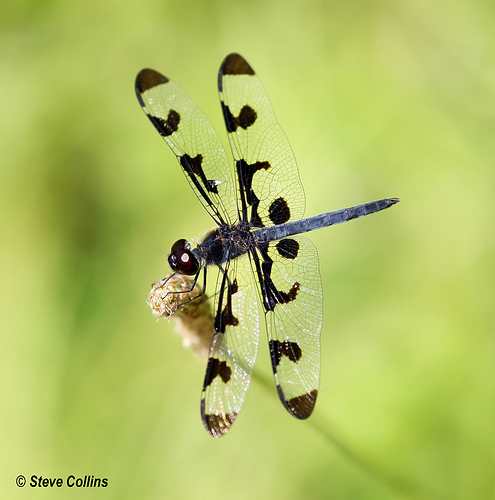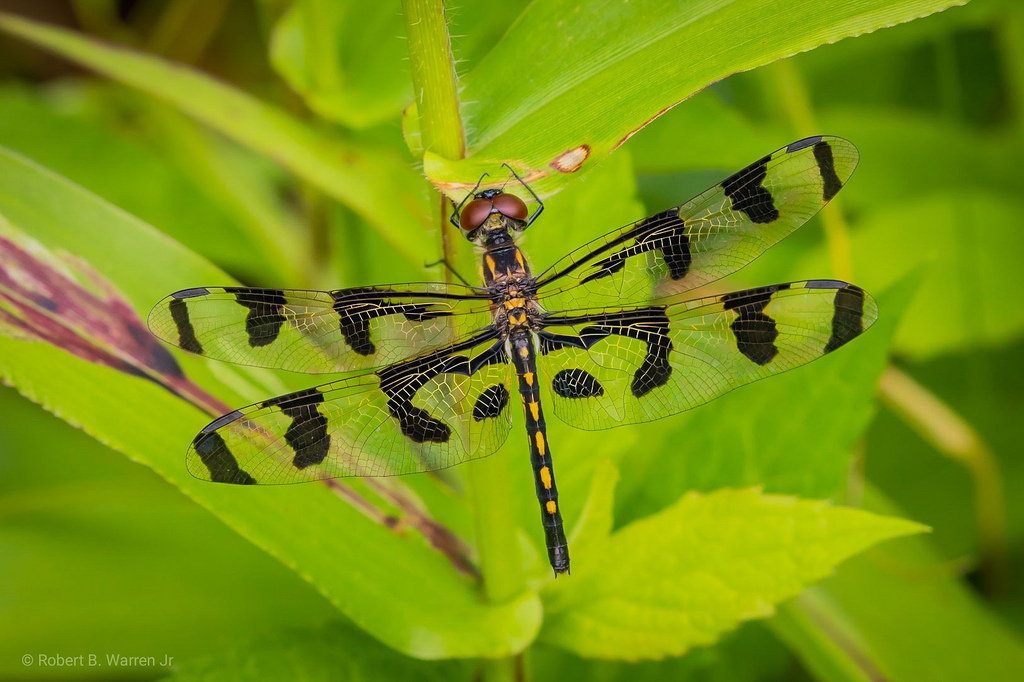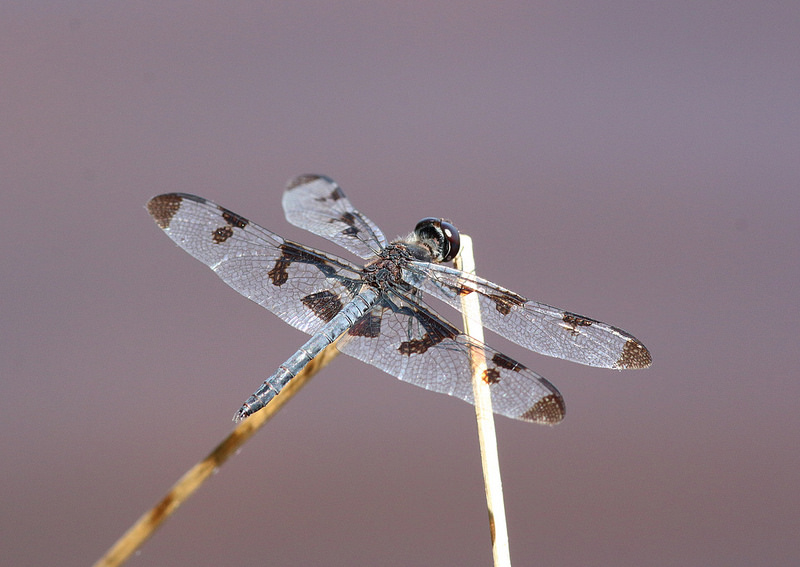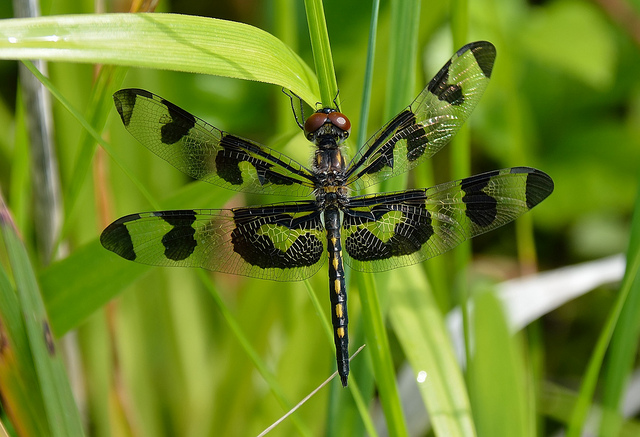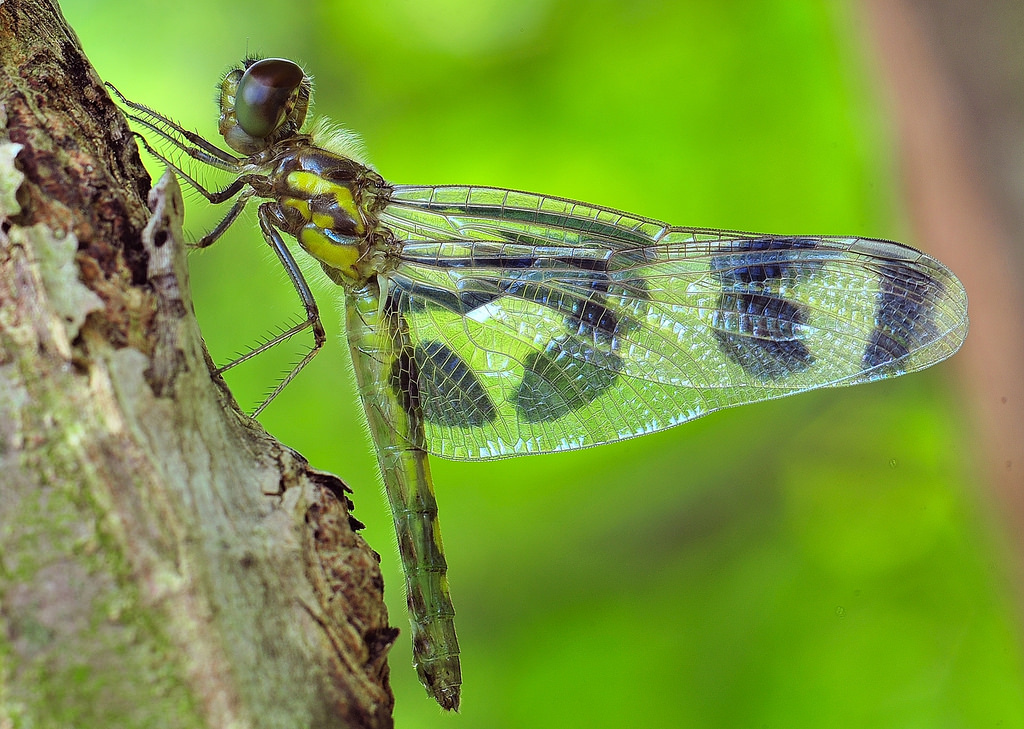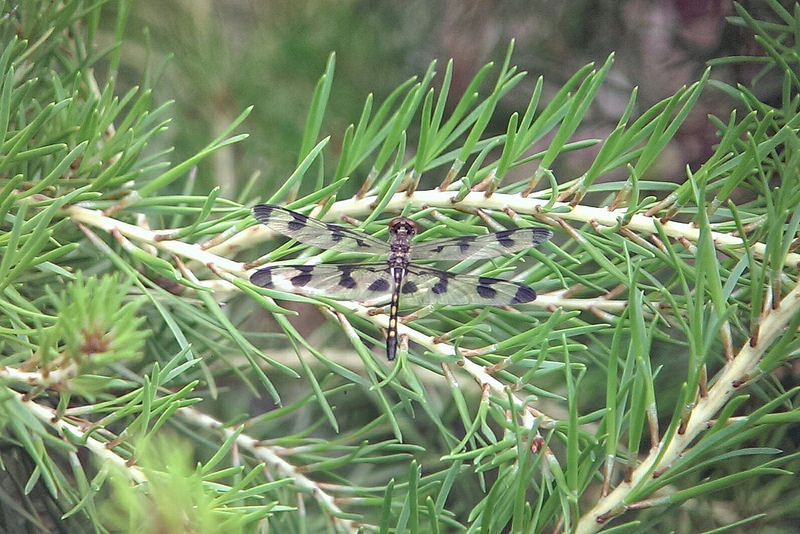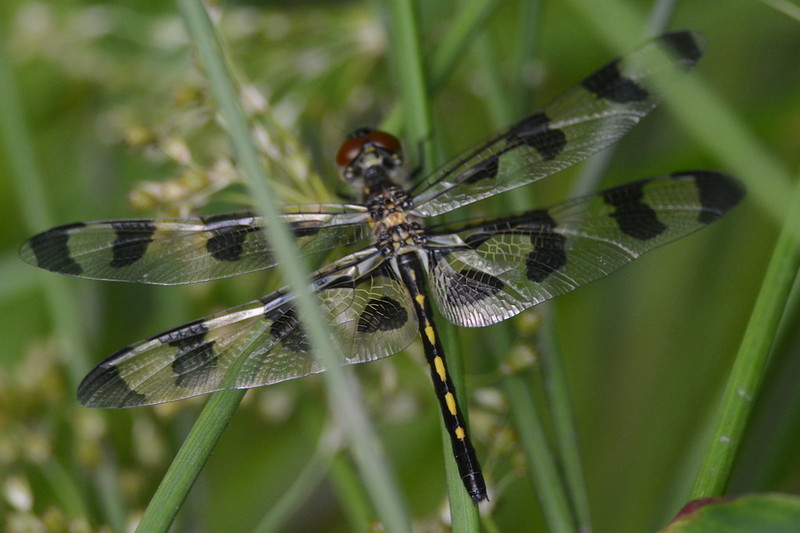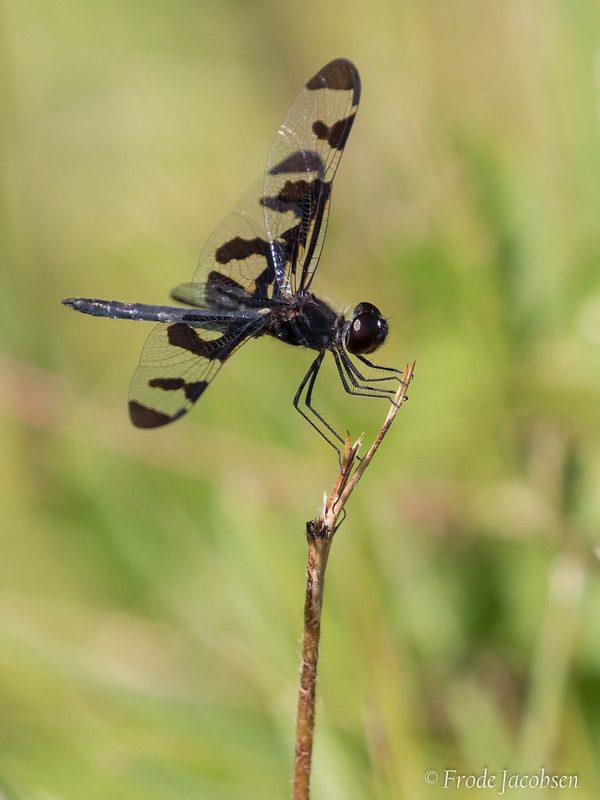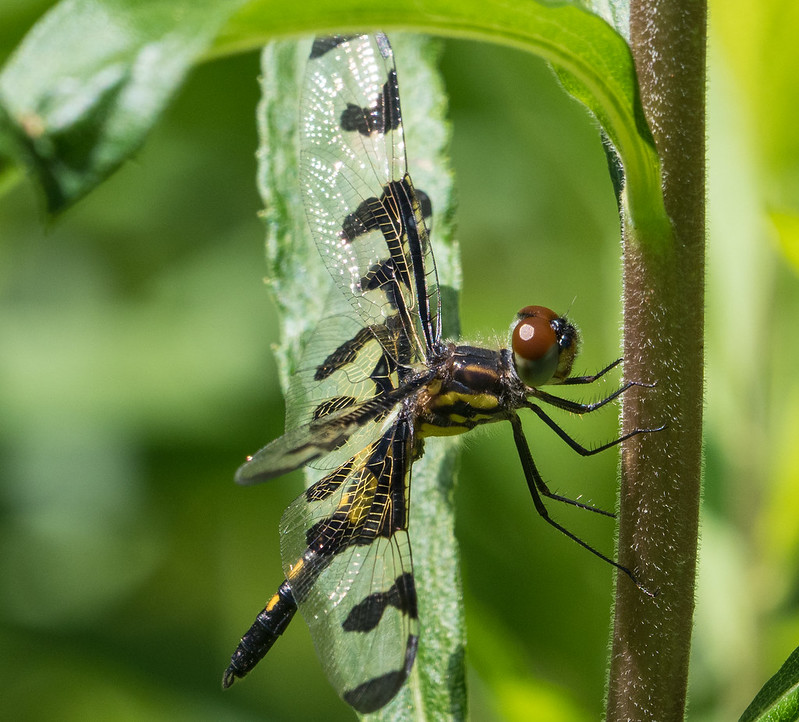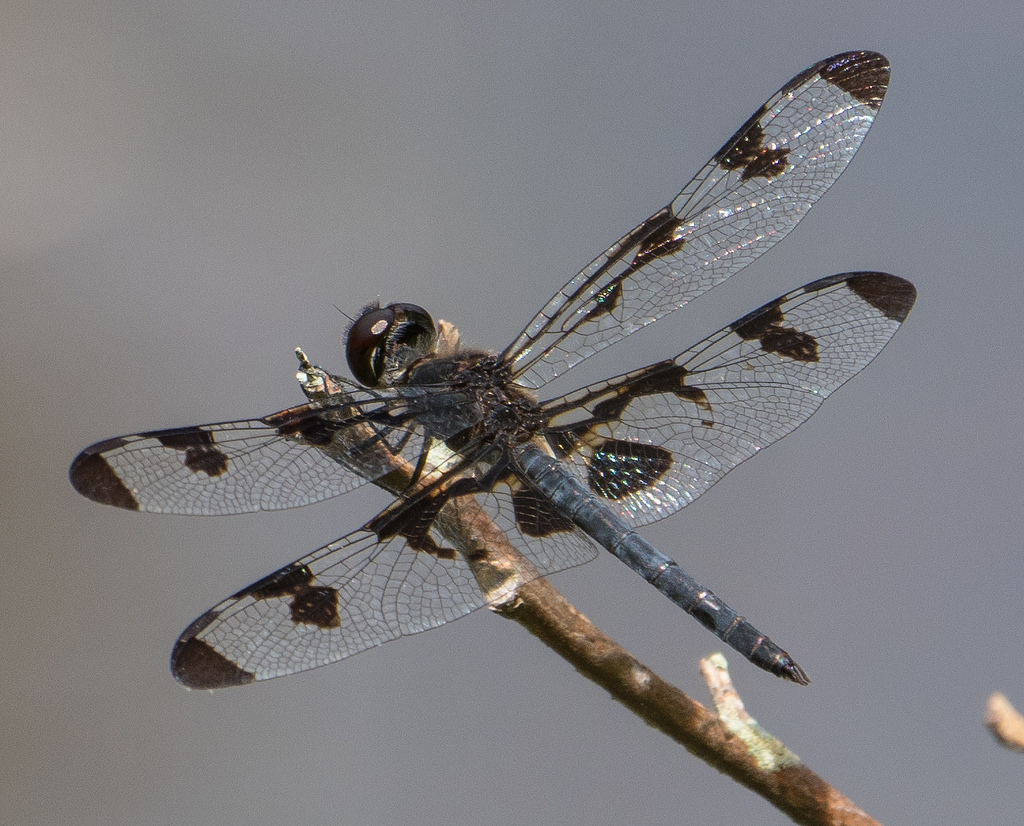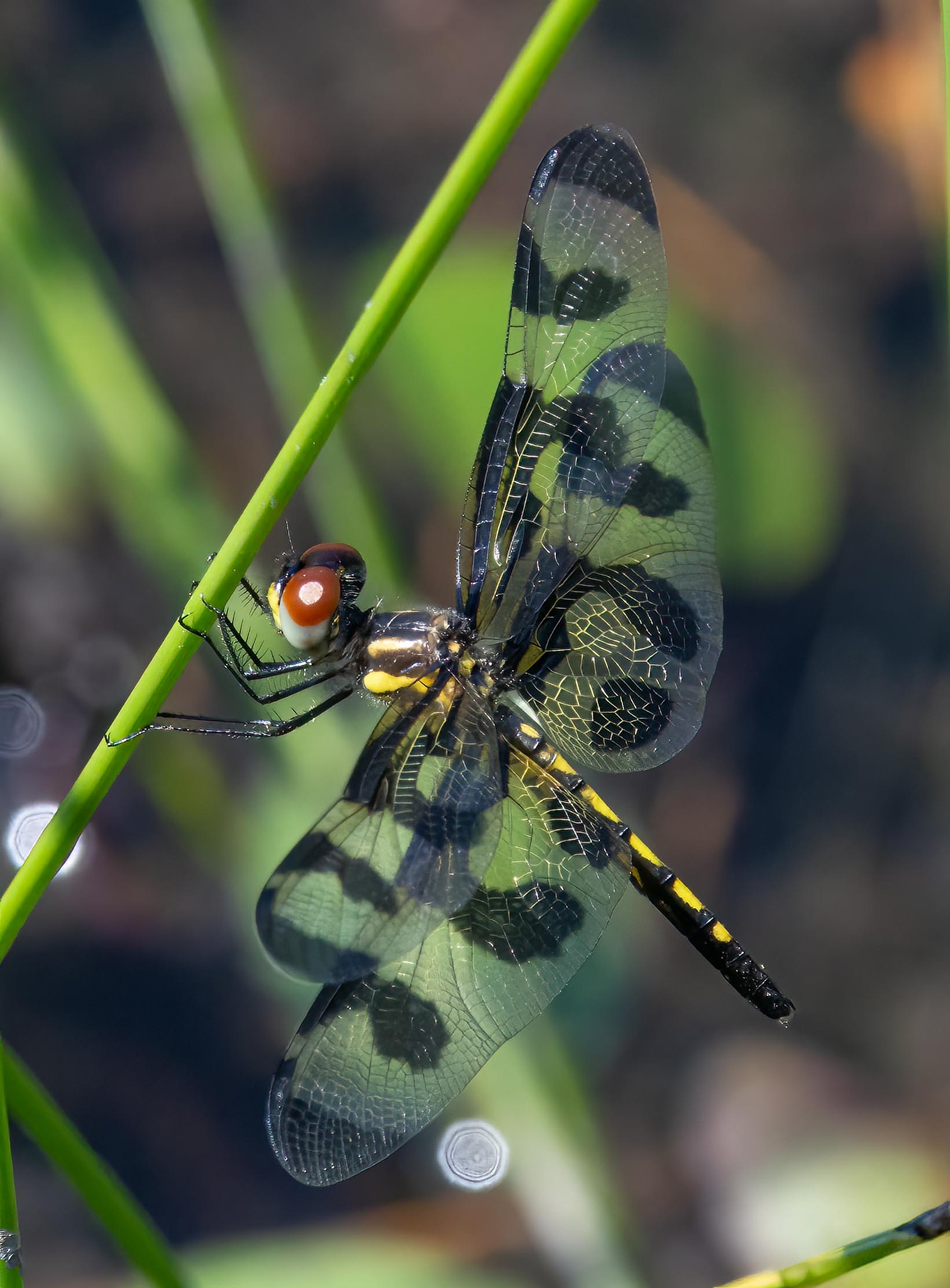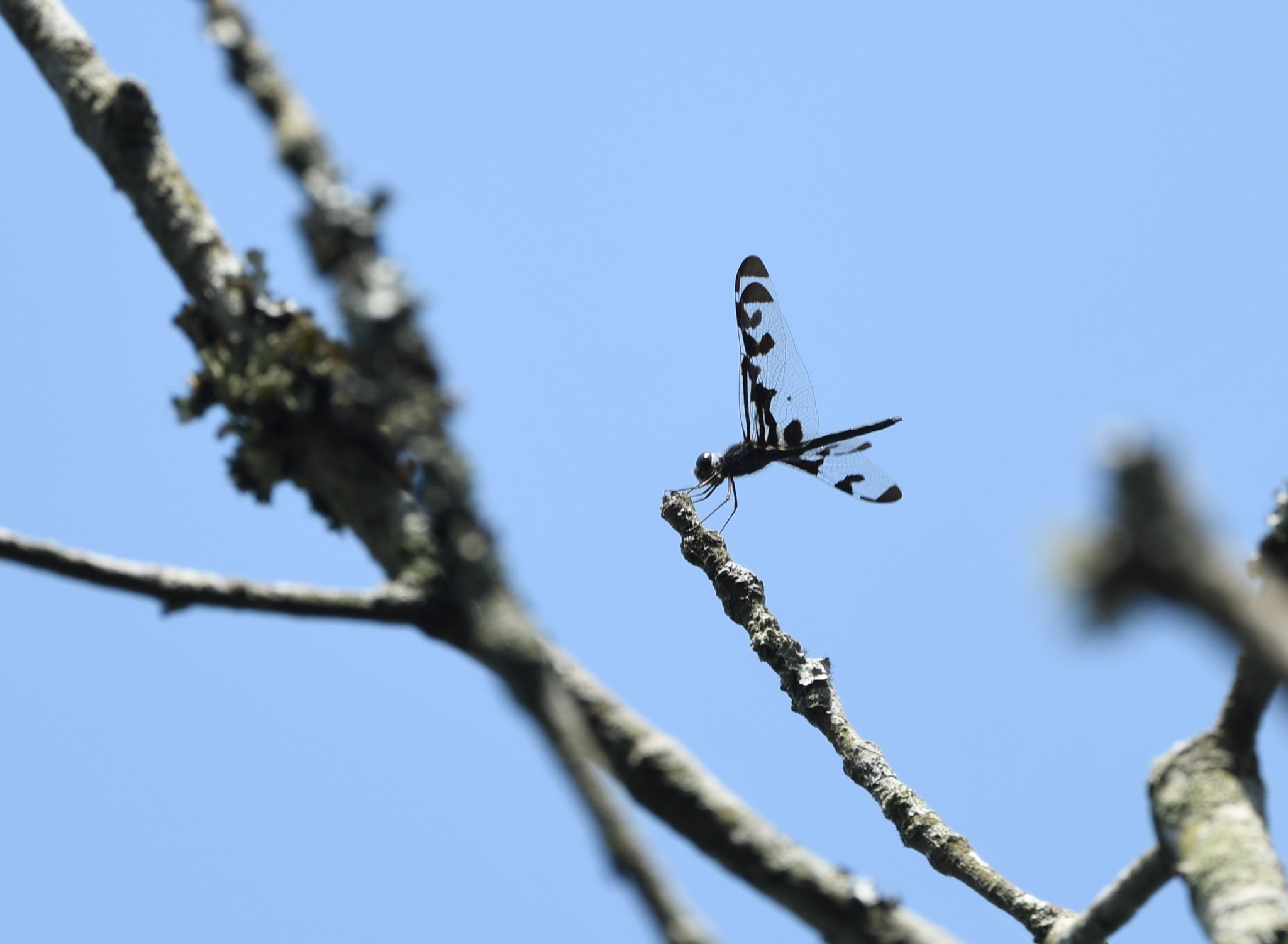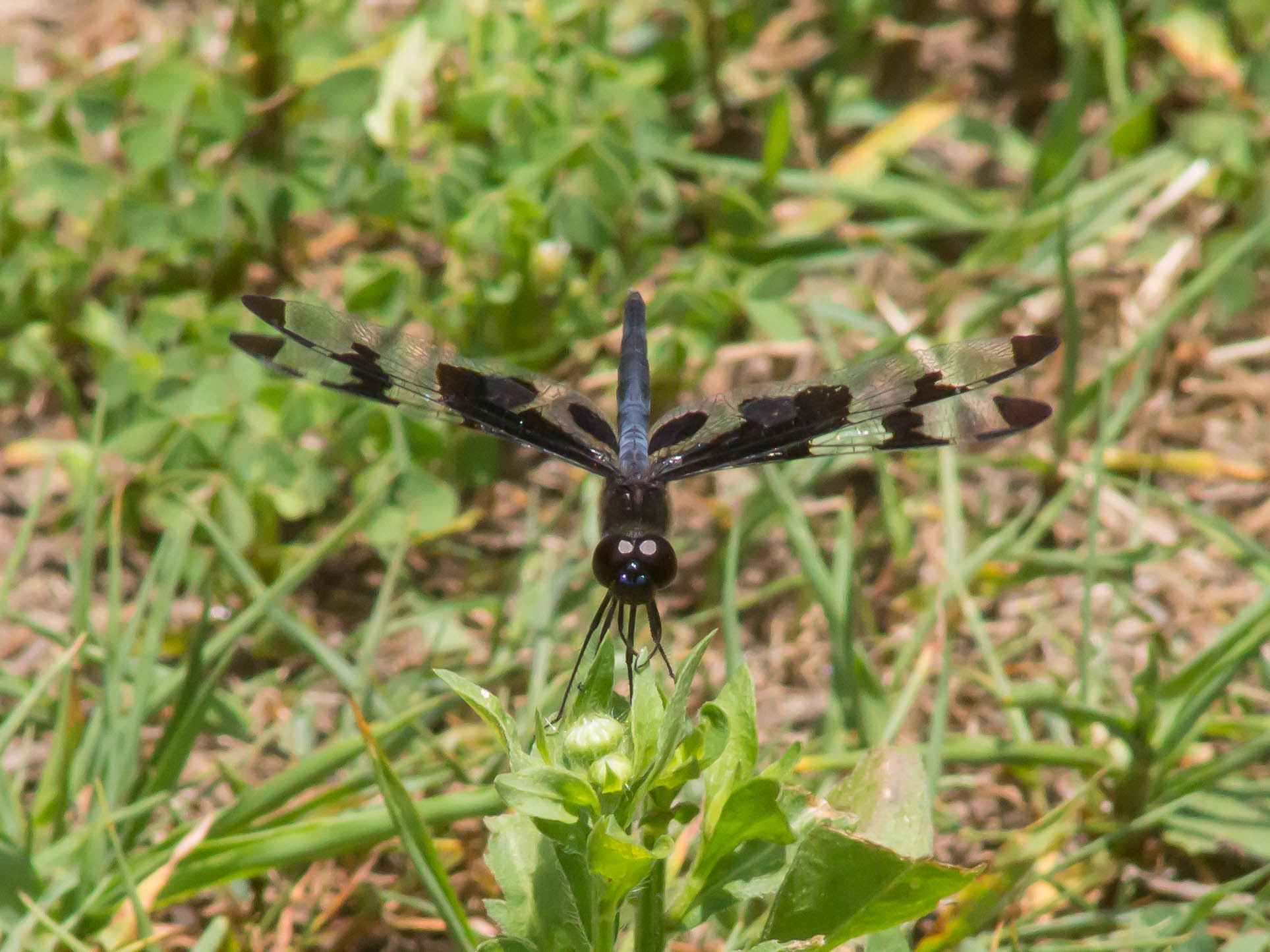Map Snapshot


















249 Records
Status
Banded Pennant (Celithemis fasciata) occurs widely at lakes with sandy substrates and vegetated margins over a broad distribution in the east. Like other Celithemis, they often perch atop stalks of plants. This is a widespread dragonfly in Maryland, though generally rather uncommon (Richard Orr's The Dragonflies and Damselflies of Maryland and the District of Columbia). This species has been placed on the watch list (S3) in Maryland.
Seasonality Snapshot
Source: Wikipedia
| Banded pennant | |
|---|---|

| |
| Female | |
| Scientific classification | |
| Domain: | Eukaryota |
| Kingdom: | Animalia |
| Phylum: | Arthropoda |
| Class: | Insecta |
| Order: | Odonata |
| Infraorder: | Anisoptera |
| Family: | Libellulidae |
| Genus: | Celithemis |
| Species: | C. fasciata
|
| Binomial name | |
| Celithemis fasciata Kirby, 1889
| |
Celithemis fasciata, commonly known as the banded pennant, is a species of dragonfly in the skimmer family. It is native to the United States, where it is found in the south-central, southeastern, and eastern regions.[2]
The extensive, sharply defined black markings on its wings are distinctive, but the pattern varies considerably; individuals from the northern part of its range tend to have less wing coloration.[3] It is about 33 mm (1.3 in) long.
It lives around ponds, lakes, and ditches.
References
[edit]- ^ Paulson, D.R. (2017). "Celithemis fasciata". IUCN Red List of Threatened Species. 2017: e.T51273061A71310035. doi:10.2305/IUCN.UK.2017-3.RLTS.T51273061A71310035.en. Retrieved 27 December 2023.
- ^ a b NatureServe (1 December 2023). "Celithemis fasciata". NatureServe Network Biodiversity Location Data accessed through NatureServe Explorer. Arlington, Virginia: NatureServe. Retrieved 27 December 2023.
- ^ Dunkle, S. W. (2000). Dragonflies through Binoculars. New York: Oxford University Press. p. 233. ISBN 0-19-511268-7.
External links
[edit]- Photo Gallery. Discover Life.
- Celithemis fasciata. USGS.
